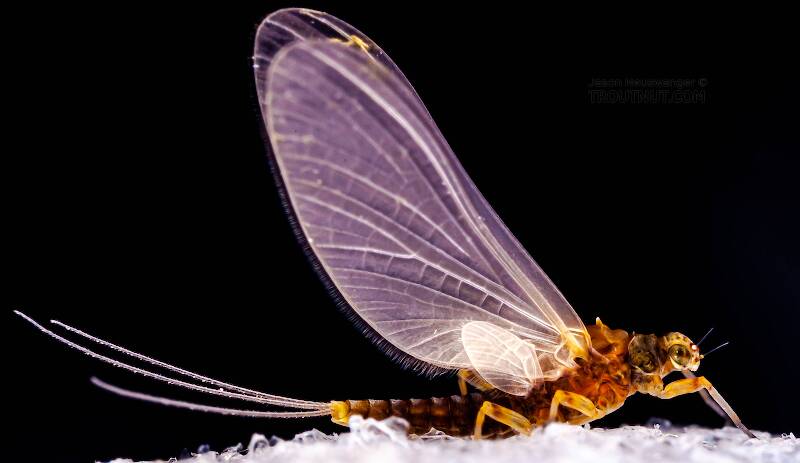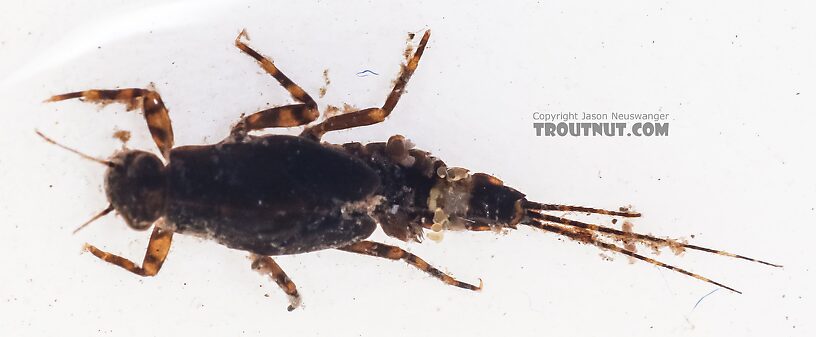
Blue-winged Olives
Baetis
Tiny Baetis mayflies are perhaps the most commonly encountered and imitated by anglers on all American trout streams due to their great abundance, widespread distribution, and trout-friendly emergence habits.
Featured on the forum

This dun emerged from a mature nymph on my desk. Unfortunately its wings didn't perfectly dry out.

Troutnut is a project started in 2003 by salmonid ecologist Jason "Troutnut" Neuswanger to help anglers and
fly tyers unabashedly embrace the entomological side of the sport. Learn more about Troutnut or
support the project for an enhanced experience here.
Little Western Blue-Winged Olives
This common name refers to only one species. Click its scientific name to learn more.
Mayfly Species Attenella margarita
These are sometimes called Little Western Blue-Winged Olives.
Though having a national distribution, this species is considered by angling authorities to be important only in the West. In localized waters where it is abundant, it can be a significant hatch.

I found this dun unusually late in the year for anything in the Ephemerellidae family in the East. It's also small for that family.

Notes from the microscope on the ID: Maxillary palp is present, distinctly 2-segmented, but very small. Gills on segment 4-7. This specimen has some unfortunate damage to the abdomen, but it's the only one I found in my sample.

